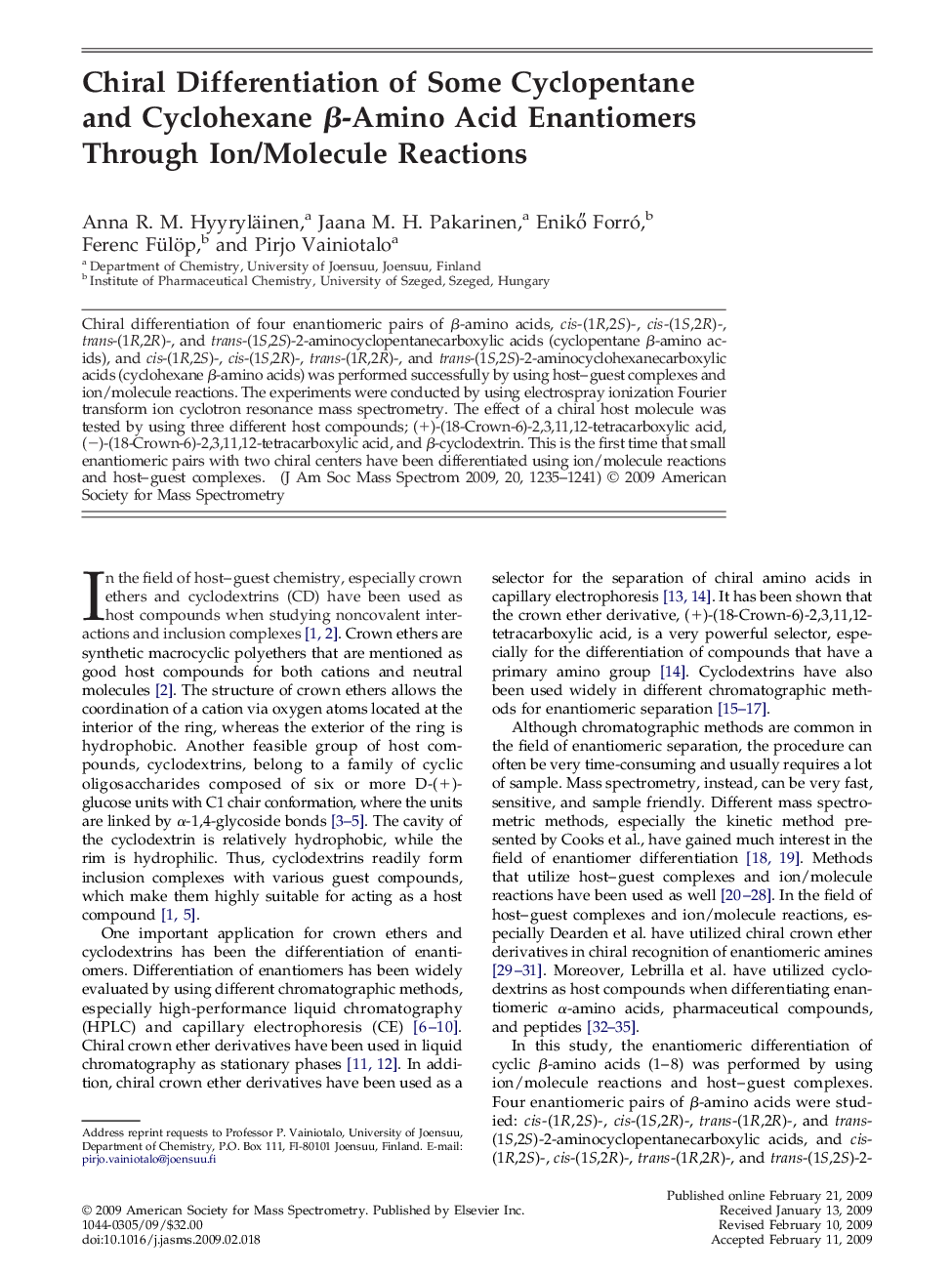| Article ID | Journal | Published Year | Pages | File Type |
|---|---|---|---|---|
| 1195239 | Journal of the American Society for Mass Spectrometry | 2009 | 7 Pages |
Chiral differentiation of four enantiomeric pairs of β-amino acids, cis-(1R,2S)-, cis-(1S,2R)-, trans-(1R,2R)-, and trans-(1S,2S)-2-aminocyclopentanecarboxylic acids (cyclopentane β-amino acids), and cis-(1R,2S)-, cis-(1S,2R)-, trans-(1R,2R)-, and trans-(1S,2S)-2-aminocyclohexanecarboxylic acids (cyclohexane β-amino acids) was performed successfully by using host–guest complexes and ion/molecule reactions. The experiments were conducted by using electrospray ionization Fourier transform ion cyclotron resonance mass spectrometry. The effect of a chiral host molecule was tested by using three different host compounds; (+)-(18-Crown-6)-2,3,11,12-tetracarboxylic acid, (−)-(18-Crown-6)-2,3,11,12-tetracarboxylic acid, and β-cyclodextrin. This is the first time that small enantiomeric pairs with two chiral centers have been differentiated using ion/molecule reactions and host–guest complexes.
Graphical AbstractChiral differentiation of β-amino acid enantiomers with two chiral centers has been performed using host–guest complexes and ion/molecule reactions.Figure optionsDownload full-size imageDownload high-quality image (123 K)Download as PowerPoint slide
